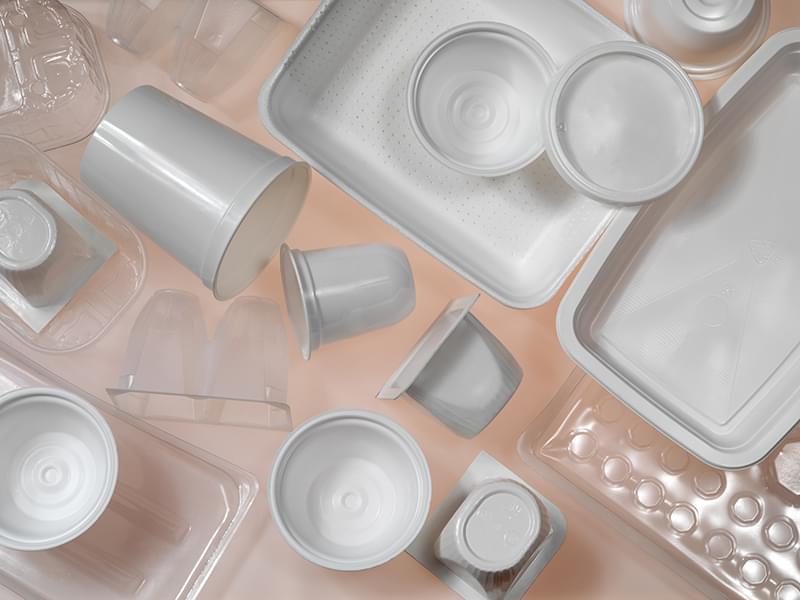Market Report
The Future of Single-Use Plastic Packaging in a Sustainable World

With Covid-19 delivering a severe economic shock across the globe, governments are contemplating stimulus packages. Many of these align to the theme of President-elect Joe Biden’s Build Back Better plan, and twin recovery with a greening of the economy.
The pioneering initiative in this area has been the EU’s Single-use Plastics Directive. It has a key deadline in July 2021 prohibiting the use of single-use plastic straws, cotton buds and expanded polystyrene (EPS) food containers and cups.
Even if it has been more muted, legislative pressure has not disappeared in 2020. Canada named six plastic formats as targets for its first federal single-use legislation in October, which is being pursued via an amendment to the 1999 Canadian Environmental Protection Act (CEPA).
California is taking a different approach and has implemented new target for 15% recycled content in plastic beverage bottles from 2023. While EU states have reinforced their commitment by voting for a surcharge of €800 per tonne on non-recyclable plastic waste beginning in the new year. These moves are easier for the plastic industry to engage with. In response it is looking to optimise existing designs for recycling, increasing rates of recovery for mechanical recycling, and investing in commercialising pyrolysis and other chemical recycling processes.
From a global perspective, Smithers data show that single-use packaging will consume a projected 40.4 million tonnes of plastics in 2020. This excludes easier to recycle formats, such as polyethylene terephthalate (PET) beverage bottles and high-density polyethylene (HDPE) milk jugs; meaning that 69% of single-use format are flexible formats.
Smithers’ research shows future growth will continue at a forecast compound annual growth rate (CAGR) of 3.7% to reach 48.5 million tonnes in 2025. This represents a decline from the 4.0% CAGR for 2015-2020, and is due to a substitution away from plastic formats in many developed economies, though from worldwide perspective this is eclipsed by organic volume growth from emerging markets, such as China.
Globally across 2021-2025 the reduction will be seen first in rigid plastic formats. In the US, single-use flexibles will continue to grow to 2025; but rigid plastics will begin to decline in real volume terms.
Embracing this potential, many pulp and paper companies have developed new tray and cup formats, including cartonboard, corrugated, and moulded pulp lines. In particular there has been an emphasis in Europe on implementing innovative fibre moulding technologies, from firms like Stora Enso, Metsa Board, and PulPac working with AR Packaging.
The largest three segments for single-use plastics are food, personal care, and pharmaceuticals & medical devices. Together, these represent around 85% of disposable plastic packaging in 2020, with food packs accounting for 63.9% on their own.
For single-use plastics, Covid-19 has had a limited effect in altering consumption patterns for these non-durable goods. Food consumption has been stable over 2020 and some sub-segments – along with pharmaceuticals – have seen a temporary rise in packaging demand as a response to the global pandemic, and consumers stockpiling long shelf-life goods. Personal care sales have slumped however, with stay-at-home consumers eliminating non-essential items from their budgets.
Its size makes the food sector the top target for fibre-based alternatives to single-use polymers. There is the extra need to secure food contact compliance for materials; and to implement effective barrier materials, especially in food service with wet or greasy foods.
In food service lockdown orders have temporarily postponed the opportunity to capitalise on the removal of EPS from the packaging portfolio of take-out and quick-service restaurant chains. While volume sales have been depressed in 2020, as these return, so will demand for packaging and innovation. This will see an extension of the trends from the late 2010s with major names in the industry keen to investigate fibre-based alternatives, and adopt these where feasible. The timing of bans on certain polymer formats in Europe will foster adoption here, and the most successful solutions will then become available in North America and other regions.
In retail food, there is less of an immediate regulatory imperative to switch; beyond a few secondary components, such as six-pack rings and straws. The main driver will come instead from retailers and brands looking to meet their own commitments and demonstrate a greener persona to their customers. Paperboard and fibre are readily understood as among the most recyclable materials by consumers, with mature processes for collecting these.
There was an understandable in hiatus in the first half of the year. Relevant product launches have returned in H2 2020, including the development new translucent and kraft papers that offer an easier to recycle substitute for plastics in applications such as salad bags and snack foods; and the development of paper-based flow wraps for confectionary or baked goods. The key challenge is matching performance – and where possible price – of existing plastic formats, especially if fibre packs are to displace plastics in mass-market applications and not remain the preserve of more niche ethical or clean label brands.